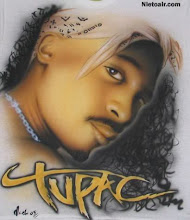Media Audiences: What techniques does the opening sequence use to appeal to a weekday mainstream audience?
Media Institutions: What does this text tell us about the media institutions involved?
Media Forms: How does the extract follow the codes and convention of an opening sequence?
Media Representation: How are people and places represented in this opening sequence?
The openining sequence contains very precise camera angles and movements which are used to engage the audience straight away from the start. the panning movement which firstly shows a close up of the girl then slowly starts to zoom out and starts to move away from her body to then look staright past her and the camera moves forward until it reaches the front gate. The camera then ends up in the kitchen. the audience that probably watches this is a everyday average joe, that has come back from work and is wanting to relax and watch a 9 o clock programme on bbc1. the opening sequence does not tell all of the story but gives some hints on whats going to happen.
The insitutions that we can clearly see that are involved are the BBC, a public service broadcaster. the bbc produced this daily programme to appeal to a wider target audience, this is possible as the BBC have a right to inform and educate as well as entertain, but becuase the BBC''s entertainment side is nt aswell as they could hope they use spooks as a entertainment programme so that they are forefilling there duty. BBC One is a regionalized TV service which provides opt-outs throughout the day for local news and other local programming. These variations are more pronounced in the BBC 'Nations', i.e. Northern Ireland, Scotland and Wales, where the presentation is mostly carried out locally on BBC One and Two. BBC Two variations within England are currently rare, though most regions still have the ability to 'opt out' of the main feed, albeit on analogue only. BBC Two was also the first channel to be transmitted on 625 lines in 1964, and then carry a small-scale regular color service from 1967. BBC One would follow in December 1969.
The opening sequence does not reveal all that will happen during the programme, instead it gives hints as to what will happen during the course of the programme, for e.g the child we see skipping at the begining of the text has some relevance as we can see her wearing a school uniform, she is young and innocent and is oblivious to what is happeninmg around her; this could play a significant role becuase we see the mysterious people talking about where the son goes to school, this could be a plan for a kidnaping. The opening sequence virtually instantly gets the audiences expectations and gives them pleasure in knowing that it's a drama. The opening sequence gives some tension in the scene of when the pair are talking in the vehicle which gives the audience the impression that this is a serious drama genre.
The clip has a serious tone about it it. The extract follows the conventions by using such codes and conventions such as binary opposition, as what we can see as good vs bad or innocent vs intetionals, this is shown by the couple in the house which are oblivious to the fact that they are being spyed on by the couple in the car. The enigma codes include why are the couple being spyed on and what must they of done to desrve this.
Tuesday 21 April 2009
Subscribe to:
Posts (Atom)
